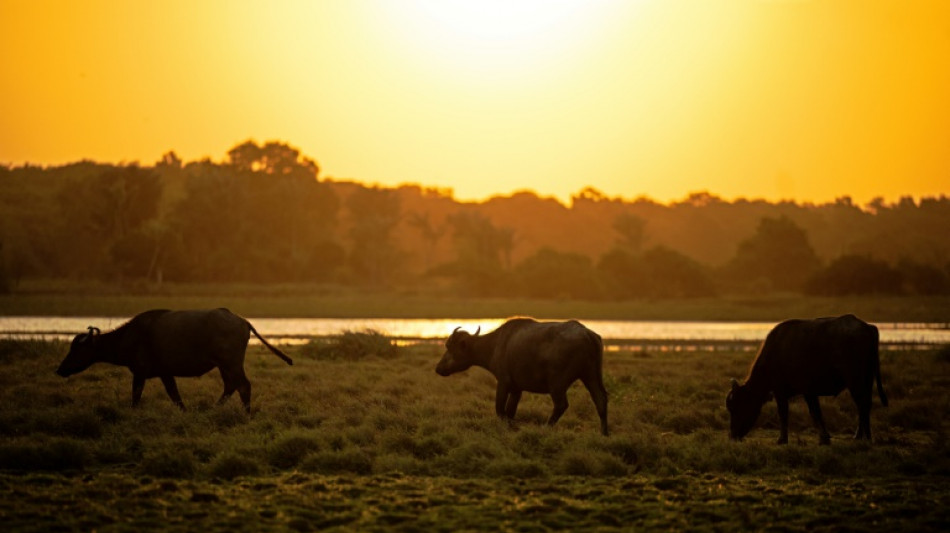
On Brazilian island, revered Asian buffalo claims its place

An incongruous sight meets visitors to the northern Brazilian island of Marajo: thousands and thousands of water buffalo, animals endemic to India and Southeast Asia that have found a new home in South America.
Some say they arrived on the island from a ship that sank off the coast, others that prisoners who escaped from French Guiana used them to navigate the mangroves to get to Brazil.
While their origins remain a mystery, the Asian water buffalo have taken to Marajo's tropical climate, where they live in a happy symbiosis with humans on the island bathed by rivers on one side and the Atlantic Ocean on the other.
They number about half-a-million today -- more than the island's human population of 440,000.
Excellent swimmers, water buffalo can grow up to 1,200 kilograms and 2.5 meters (8.2 foot) nose to tail, and are a popular work animal on Marajo, dragging carriages through the streets of the town of Soure and helping farmers in the fields.
The beast is revered in local culture, appearing with its curved horns on product logos and reproduced in sculptures and murals. Local festivals feature buffalo races.
The animal is also ubiquitous on restaurant menus, where fat, juicy buffalo steaks are served topped with buffalo mozzarella.
- 'Buffalo soldiers' -
Extraordinarily, the buffalo are also employed as patrol animals by the military police in Soure, where heavily-armed officers ride on their backs in specially-adapted seats.
The Soure military police unit's headquarters is adorned with a plaque made of bullet casings depicting a muscular buffalo holding a shotgun.
"The buffalo patrols arose from the need to send our officers into the flooded fields of Marajo. Thirty years ago that was the only way," battalion commander Leomar Aviz told AFP.
Thus were born the so-called "Buffalo Soldiers" of Marajo -- a nod to the 19th century US army regiments composed mainly of people of African origins, and lionized by reggae star Bob Marley a century later.
- Smell a criminal -
The animals can easily cross the muddy mangroves of the island during the rainy season.
Police claim they can reach speeds in these conditions that horses or even motorcycles cannot match.
But learning to control a buffalo is no easy feat, and officers require long months of training.
"Some veteran police officers say that the buffalos can smell a criminal from more than a kilometer (0.62 miles) away. But this is just to prank the newbies," Aviz told AFP.
Q.Marshall--TNT